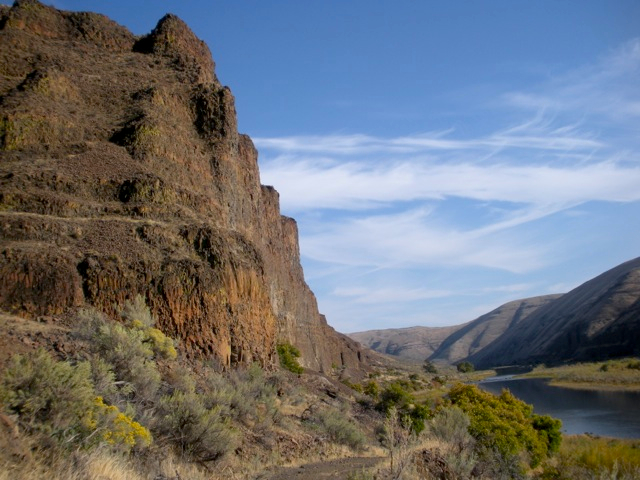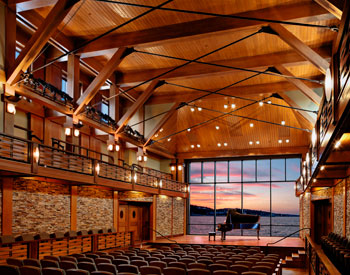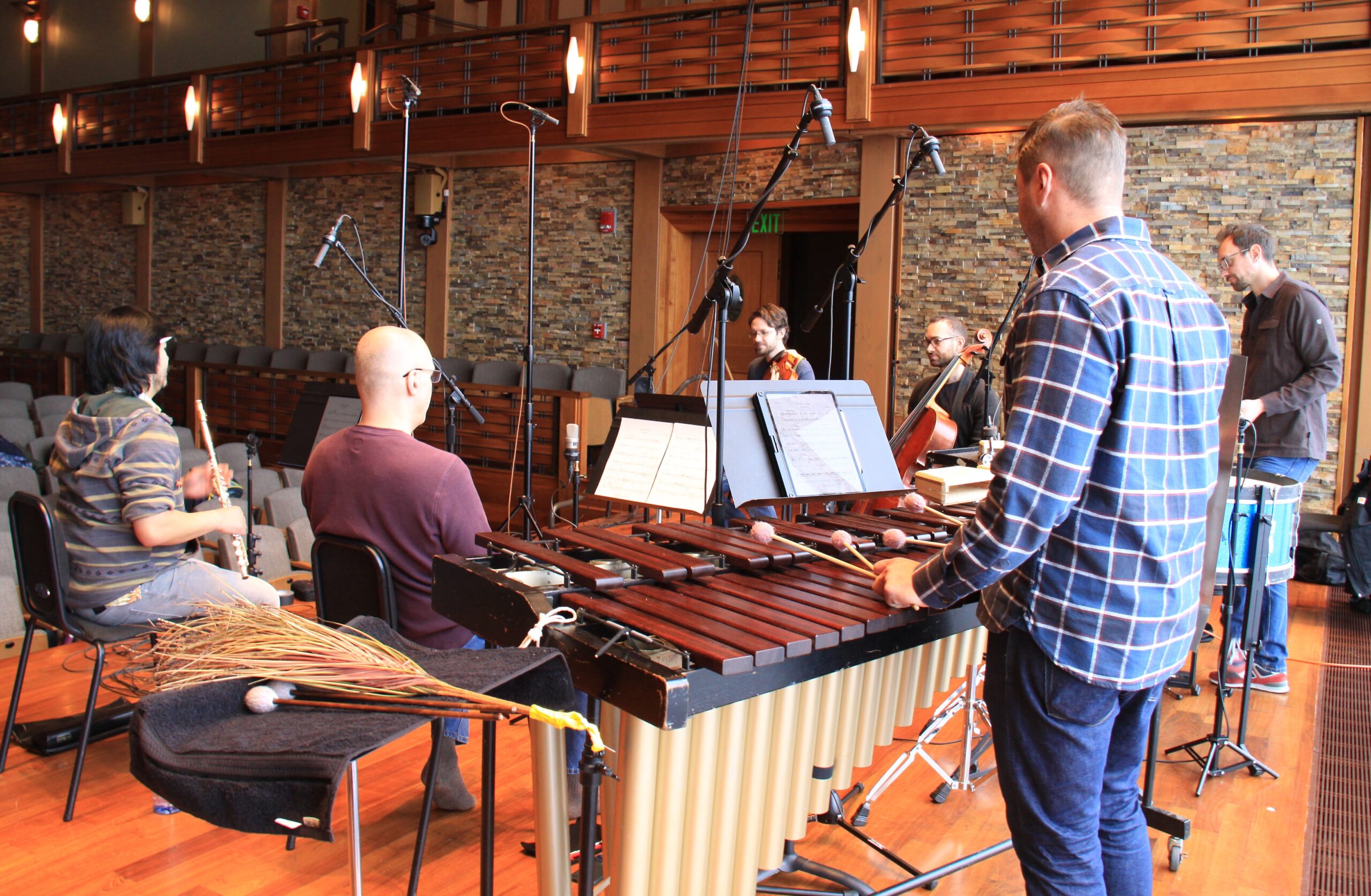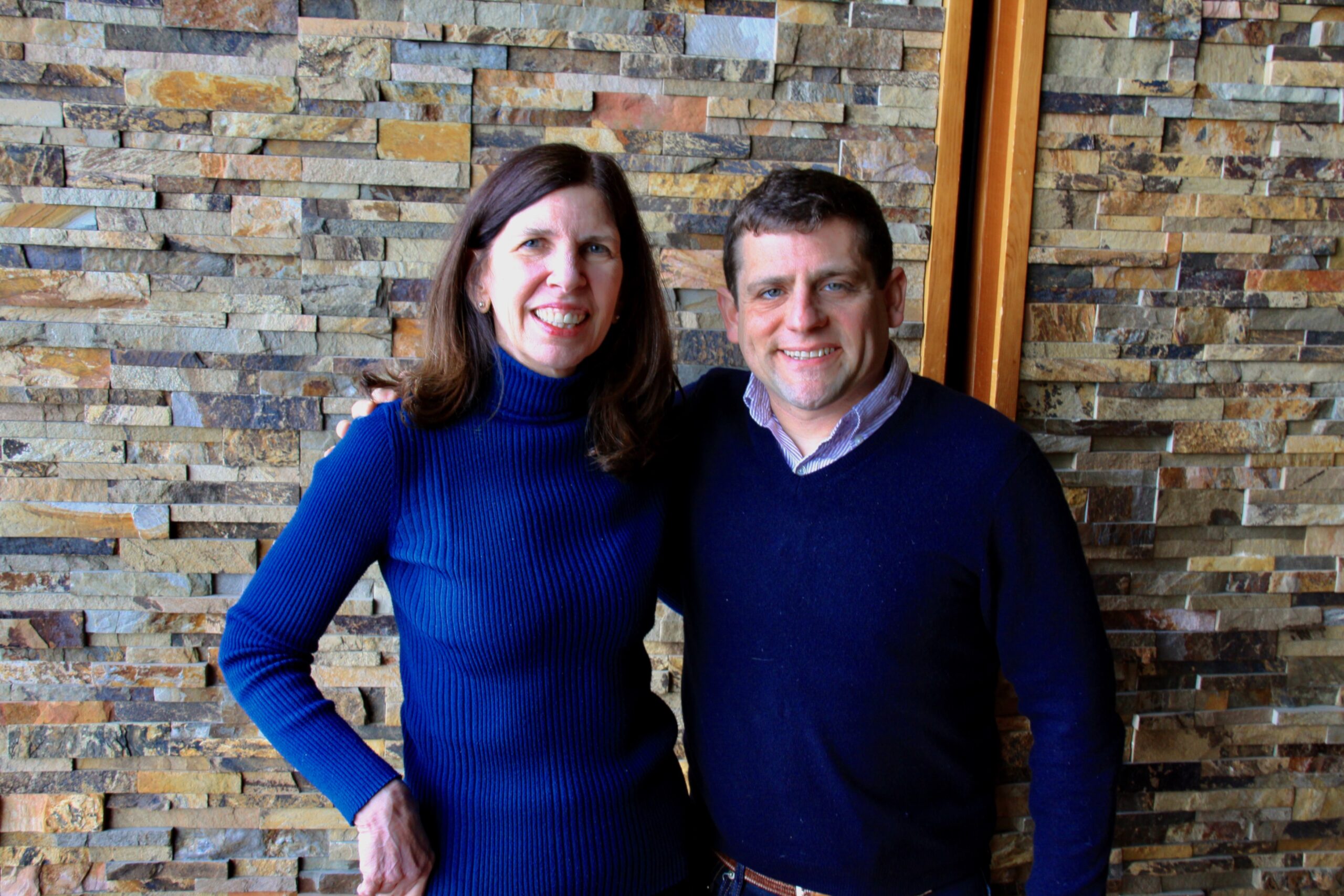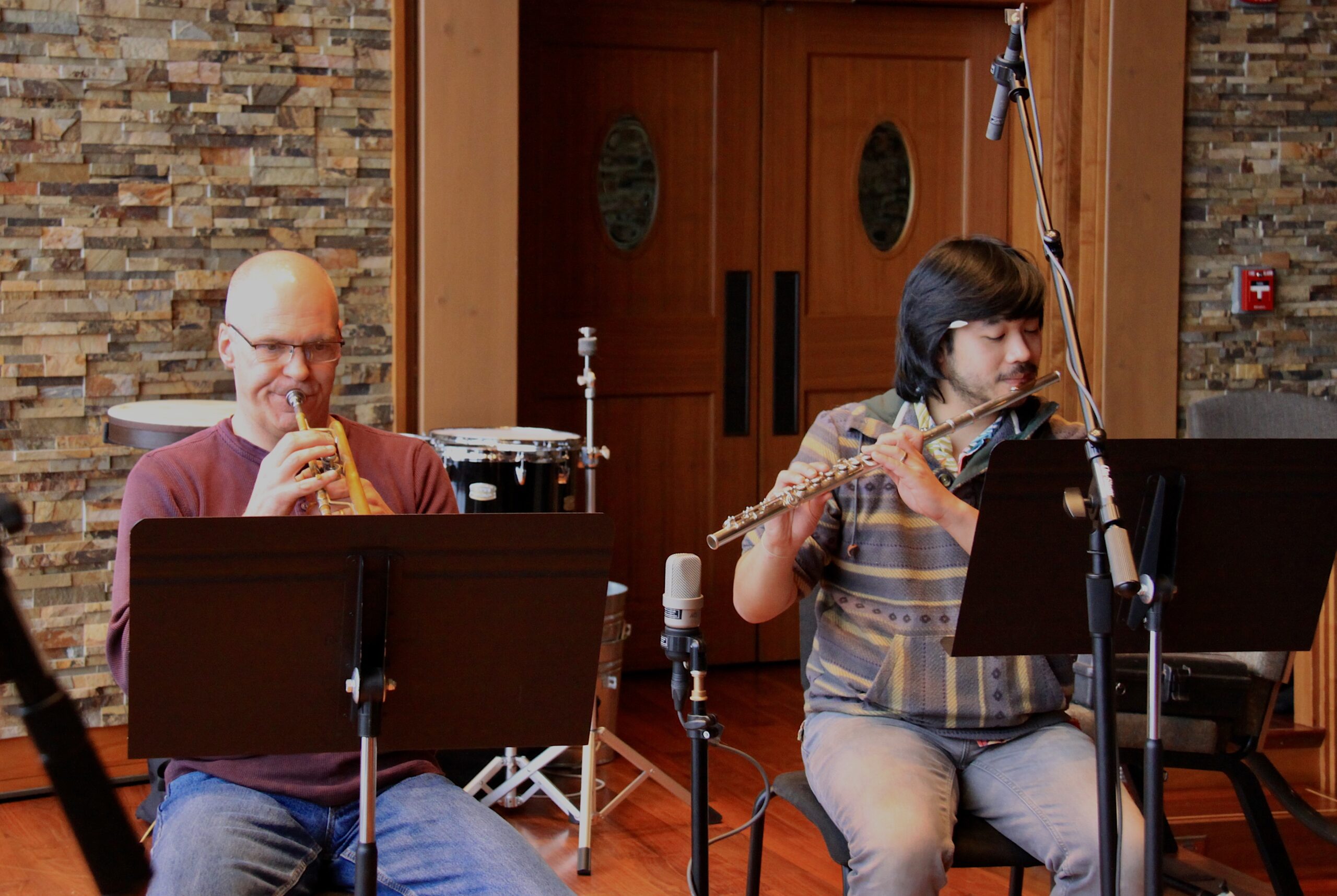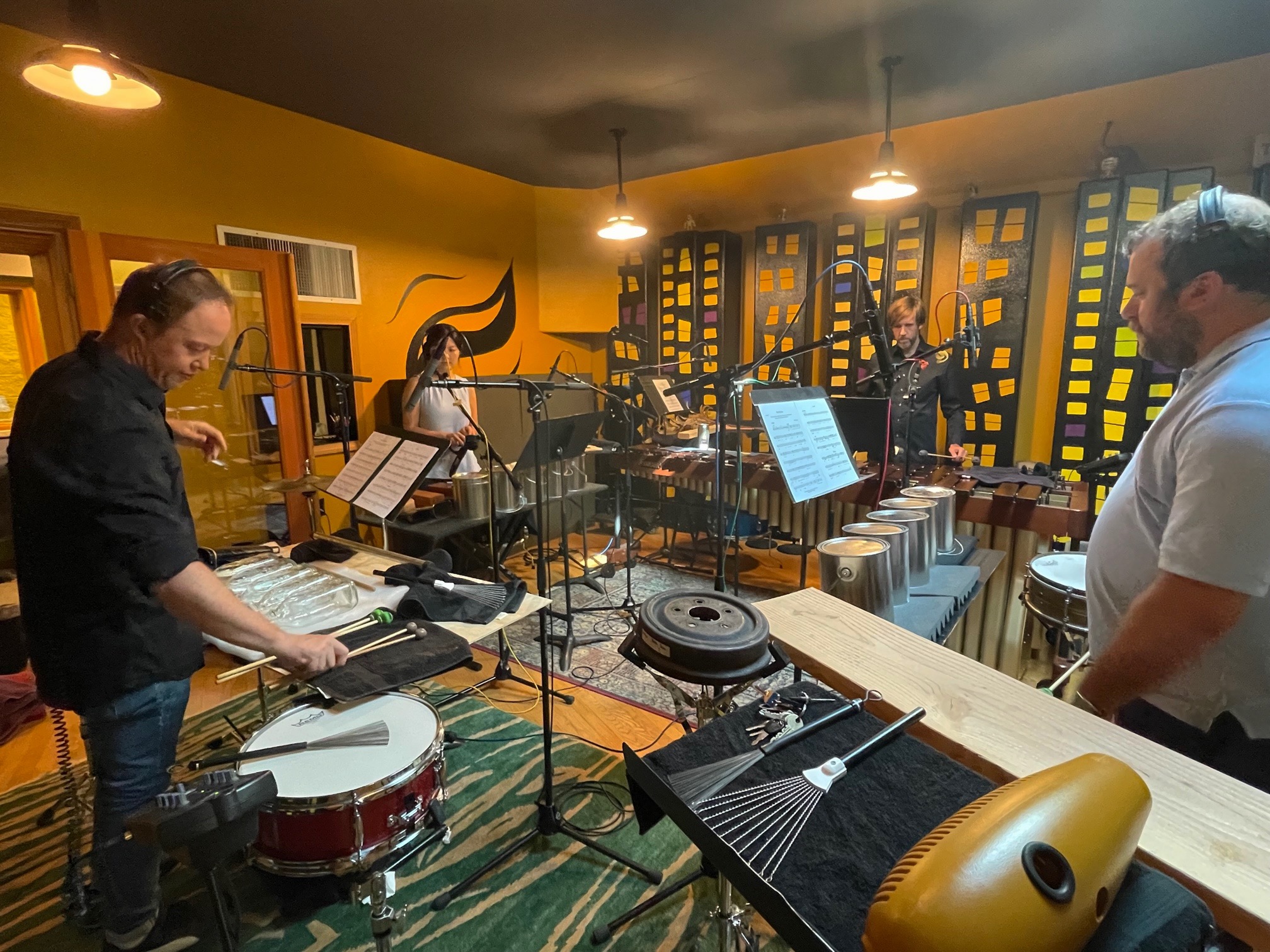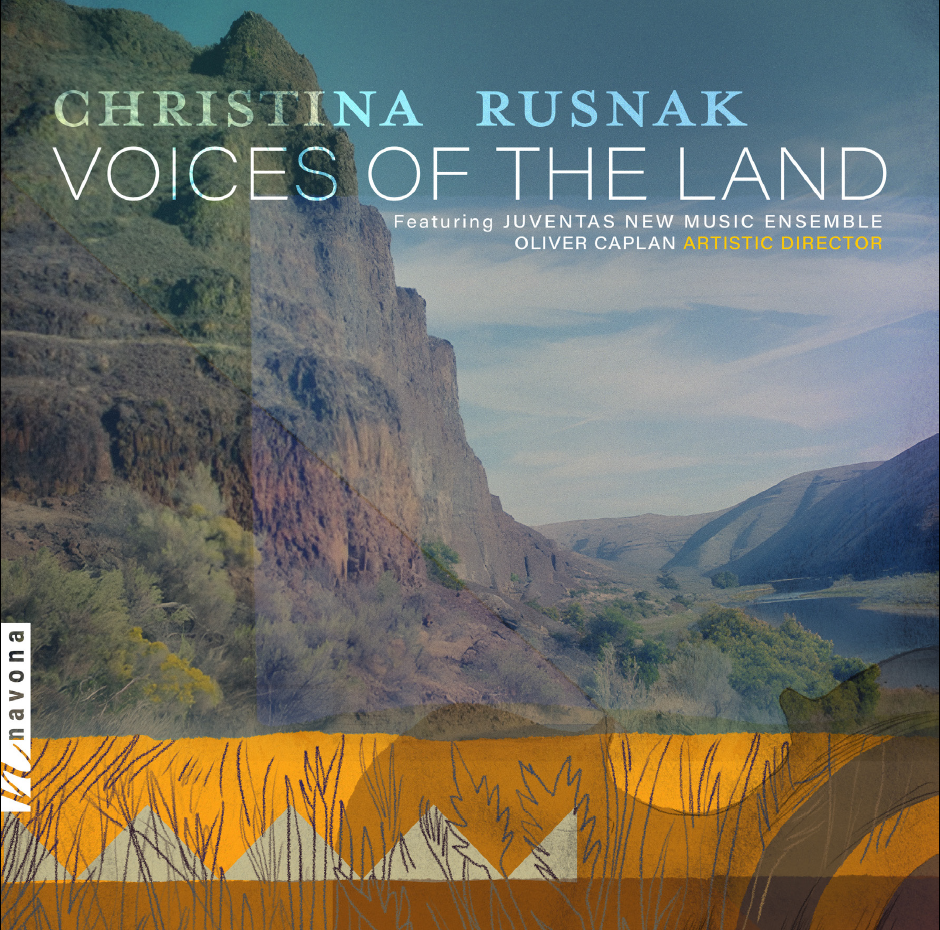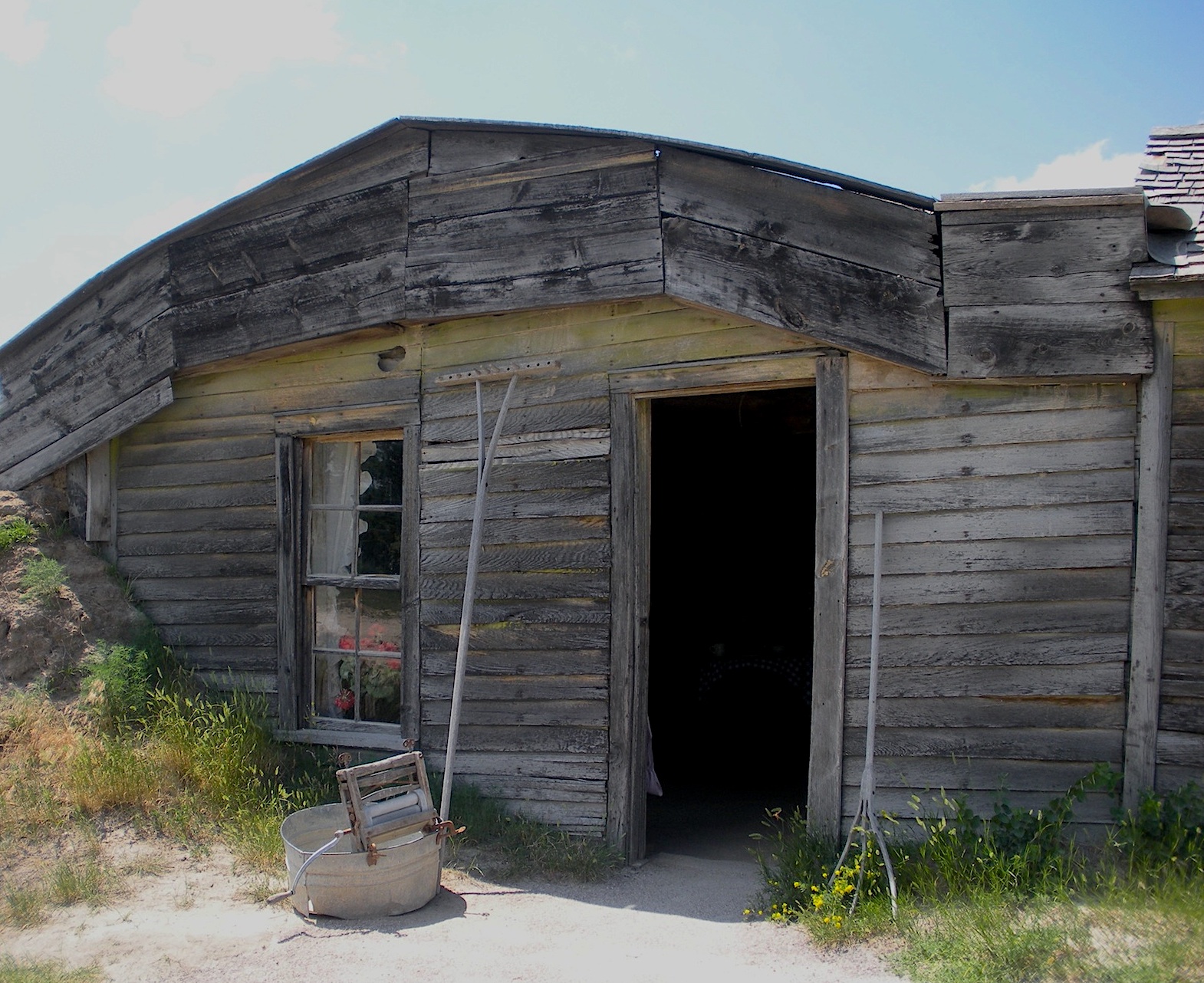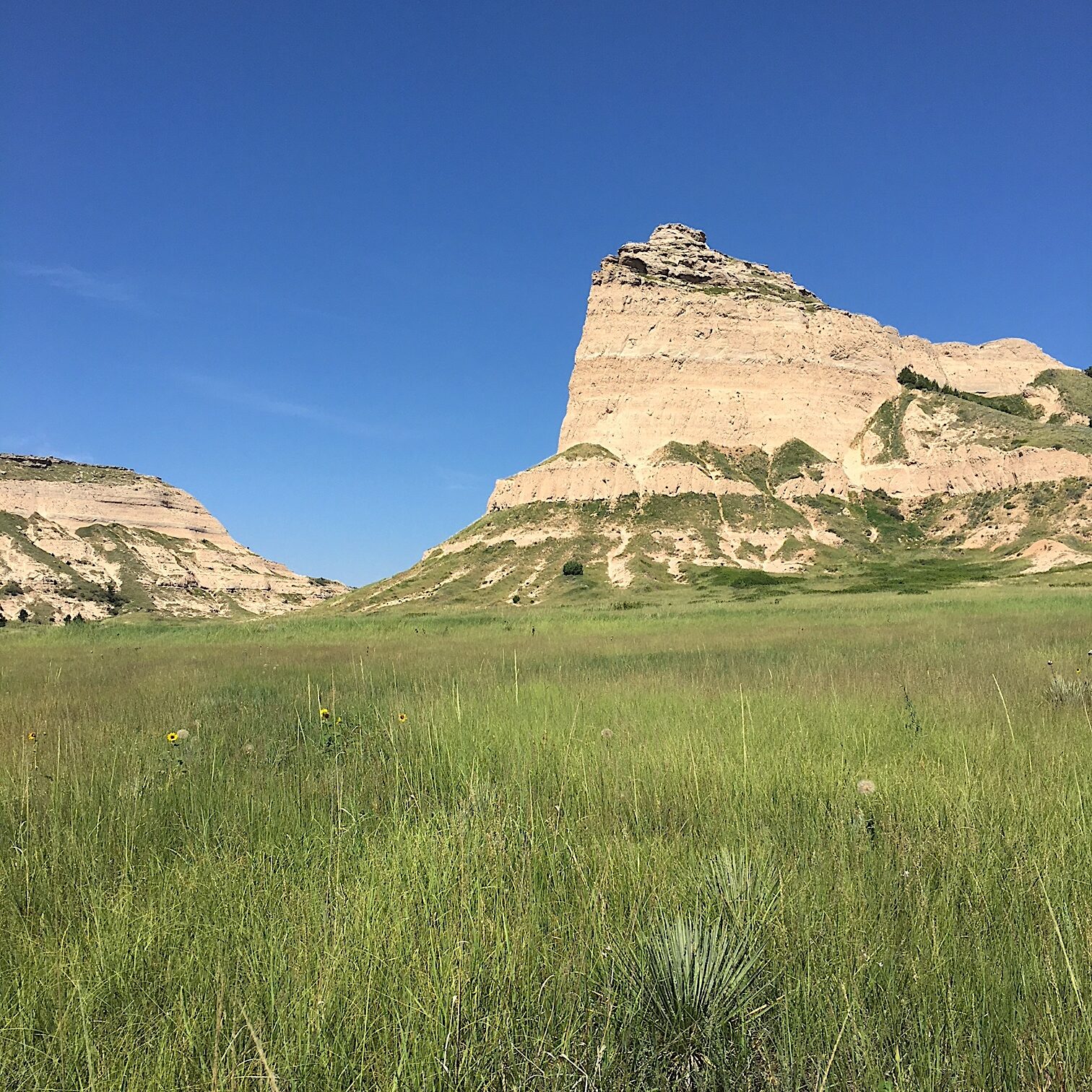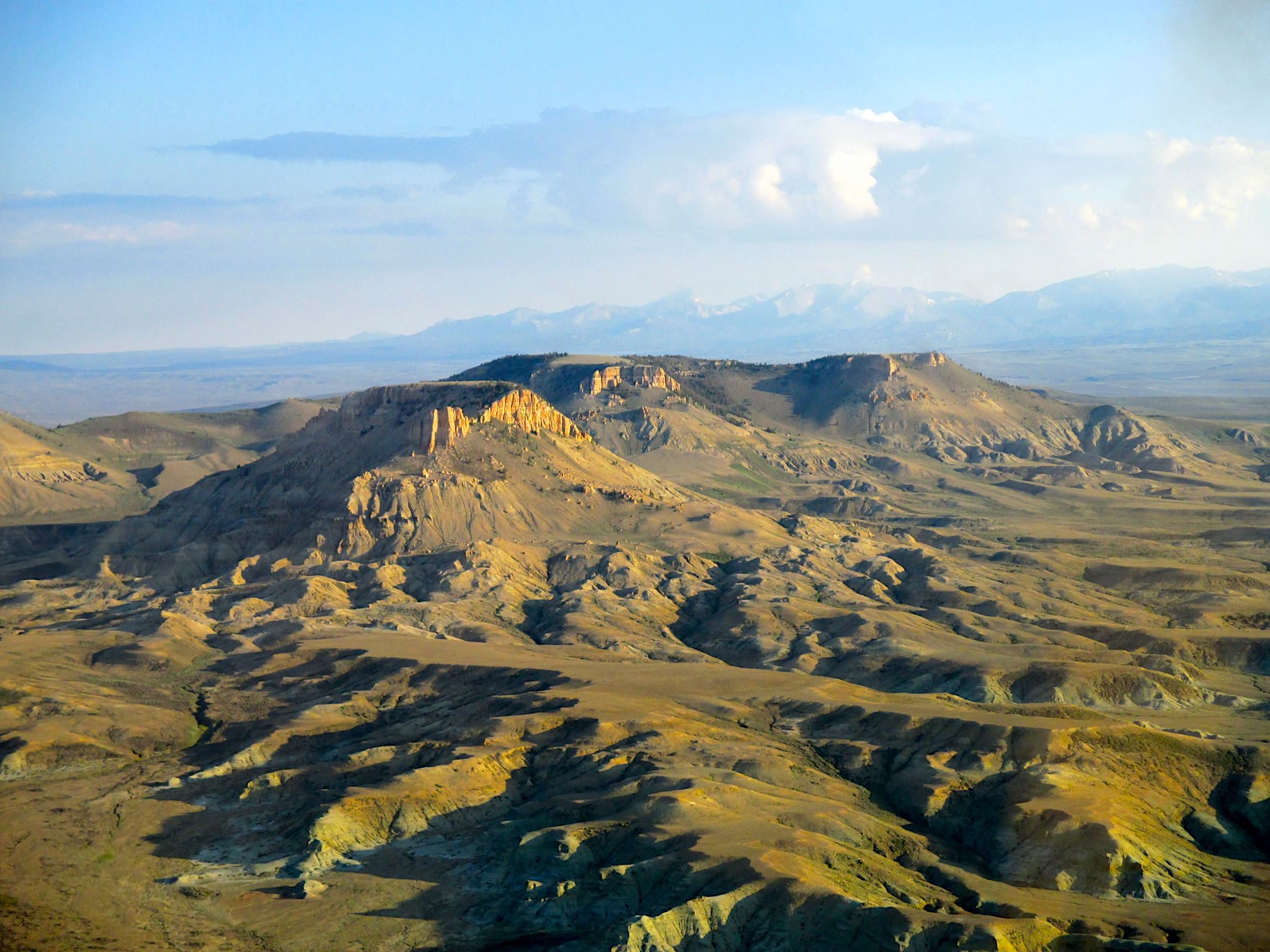VOICES OF THE LAND
GLOBAL MUSIC AWARDS BRONZE WINNER 2023
VOICES OF THE LAND musically explores diverse landscapes, beautiful and rugged as well as desolate and abundant across the western United States, against the backdrop of settlement; of land and livelihoods ripped away, and land and livelihoods given away. The six pieces in this project tell a collective story, but it is only in looking back over the last ten years that the linkages between these iconic and obscure sites have become apparent.
Each piece was composed in its own geographic and cultural bubble; my assertion is that every landscape embodies multiple voices, multiple perspectives, including those of the land itself. An avid hiker, I am passionate about composing about place and the human experience. Sometimes that’s environmental, sometimes social, and in this case, something more.
I’ve been commissioned by the U.S. Forest Service, the National Park Service, and Oregon State Parks. In 2019, I led the renowned Composing in the Wilderness Seminar in Alaska. Working at the intersection of nature, culture, history and art, I strive to integrate context into my music to convey something meaningful. The pieces on this album represent North Cascades National Park (WA), Cottonwood Canyon State Park (OR), Yukon Charley Rivers National Preserve (AK), The Oregon Historic Trail (Many), Homestead National Historic Park (NE), and Pine Meadow Ranch (OR).
MUSIC can connect people in ways beyond notes on a page.
Five pieces were recorded and produced by Parma Recordings at Shalin Lu Performance Center in Rockport, Massachusetts and performed by Juventas New Music Ensemble, an inspiring contemporary chamber group based in Boston. The recording of Pine Meadow was funded by a Grant from the Regional Arts and Culture Council in Oregon and recorded at Dead Aunt Thelma’s Studio in Portland.
Shalin Liu Performance Center Sho Kato, flute, Celine Natalie, clarinet, Robinson Pyle, trumpet Christina Rusnak & Oliver Caplan,
Ryan Shannon, violin, Thomas Barth, cello, Thomas Schmidt, percussion
Sho Kato, flute, Robinson Pyle, trumpet Ryan Shannon, violin, Celine Natalie, clarinet Nick Rose, Wanyue Ye, Brian Gardiner, Will Reno
COVER
ABOUT EACH PIECE
HOMESTEAD NATIONAL HISTORIC PARK – FREE LAND: FINALIST 2024 American Prize
Notes: The National Monument and Historic Park was celebrating the Homestead Act’s 150th Anniversary in 2012, when I composed this piece. On my way to Nebraska, I visited some of the National Grasslands in Oklahoma and Kansas; while there, I traveled to sites along the various immigrant trails. I felt the internal conflict between the new life and opportunity for the emigrants and the horrific devastation and loss of life that the act resulted in. In selecting the instrumentation I tried to evoke ancient and landscape sounds, drums, grasses, wood as well as an assortment that resembled those instruments most often brought to this new landscape by immigrants and migrating Americans. After keyboards, homesteaders brought trumpets/cornets violins, bass viols drums and flute most often. I also integrated the sound of metals for the machinery.
HOMELAND: The first movement interweaves the essence of the American landscape and environment with the lives of the original Americans. Thunderstorms, fierce wind, gentle grasses, rolling hills, are entwined with the cycles of the land and of life.
TWO SEASONS: The seasons, hot, cold, windy, rainy or dry hugely impacted the success, or more often not, of the homesteaders. This movement tells the story of the anticipation and celebration of the passing of the Homestead Act; the impact of the railroad, the clash of built-up expectations with reality and most importantly, the settlers’ hard work, joys and sorrows.
HARVEST: Towns sprung up and provided the web that allowed many to realize their dreams. When the harvest comes in, everyone celebrates. The third movement is primarily a traditional dance movement reflecting the revelry; at the same time honoring and lamenting the people whose lives are devastated.
NORTH CASCADES NATIONAL PARK – THE WAY THROUGH
This park, usually described in superlatives, is often referred to as America’s Alps, Located in the southern sector of the park, the community of Stehekin, with a year round population of about 60, defies description. Accessible only by boat, plane or on foot, Stehekin, loosely translates as, “The Way Through”, referring to the centuries old trail over the glacial ridge to the Valley. Situated at the end of Lake Chelan, the narrow valley is flanked by mountains rising thousands of feet – fjord-like. Pictographs drawn on the canyon walls by the valley’s first inhabitants reveal the changing snow and ice levels over time. Miners and Homesteaders began arriving in the 1880s and tourists soon afterward.
Upon arrival, I discovered a landscape both breathtaking and formidable. I hiked several trails during my stay. The kids in their one-room school house (gym attached) totally inspired me, teaching me what is important about the North Cascades – the woods, fresh snow, exploring the creek, getting dirty, the sounds of the bugs and learning how to make the things they need. At night in my cabin, I found myself captivated by the night sky and the bright glow of the moon on Lake Chelan silhouetted by the mountainous cliffs across the water. I have never experienced anything like it.
In composing the piece, I kept coming back to the values and characteristics of the people who forged a life in this unforgiving landscape and those who continue to live here – their sense of unity in spite of differences, their perspectives – a way of seeing the world, a different sense of time – their interaction with the environment and each other. My stay converged with the annual Harvest. To convey the cohesion of community and landscape, I wove into my piece a favorite song from the festivities, “Will the Circle Be Unbroken?” composed by prolific gospel composer, Charles H. Gabriel in 1907. A year later I went back. The day of performance was windy and the recording terrible, but the response was one of the best in my career.
YUKON CHARLEY NATIONAL PRESERVE – COAL CREEK
This piece considers the rise of a gold mining camp and the life of its people as I imagined it in these challenging environmental conditions of this incomparable landscape, along the ever-present Yukon River. The Klondike Gold Rush of 1897 brought thousands of miners and in 1901 the first gold claim was filed at Coal Creek, where coal had also been discovered. Over time, miners had to dig deeper for the gold, and in 1936 an enormous gold dredge was erected at the creek, chewing through 3000 cubic yards of gravel a day. For the miners and their families, life was hard and isolated yet richly memorable. Now located in the Yukon Charley National Preserve, the 1930s mining camp’s frame bunkhouses, mess hall and a few other buildings have been restored. Access today as then is primarily by boat. With the closest community 60 miles in one direction and 100 miles in the other, a gravel air-strip enables bush planes to provide a thrilling access to the camp.
THE OREGON HISTORIC TRAIL
I strive to evoke the essence of the landscape along the route, divided into three geographic areas: the Plains, the Rockies, and the Oregon Territory. The three movements each represents important places for both the trail’s historic inhabitants and the settlers. Thus the music attempts to take the listener back to the landscape itself, and to life prior to and during the pioneers’ cross-country experience. The Oregon Trail cemented the U.S. boundary with Britain and justified human sacrifice in the name of progress. Thus, the emotions of these people, both with historical ties to the landscape, and the travelers moving through, found their way into the music.
Me-a-pa-te (Scott’s Bluff) Nebraska: Me-a-pa-te translates as “hill that is hard to go around”. The bluff rises 800 feet above the valley floor. The surrounding Platte River Valley of Nebraska, with its once-endless prairie grasslands, has served as a pathway, hunting area and farmlands for thousands of years. The piece interweaves the prairie landscape, the lives of its diverse inhabitants with the experience of the settlers and their wagons traveling by Scott’s Bluff.
Mudza (South Pass) Wyoming: Mudza served as a primary corridor for annual animal migrations and a conduit of continental trade for millenia. The South Pass was also the essential point in western geography and history for the American vision of Manifest Destiny. The movement explores the experience and impact of crossing the South Pass for both the indigenous people and the settlers.
Hyas Tyee Təmwata Willamette Falls is the second only to Niagara Falls volume in the United States. Painters had built up this landscape as North America’s Eden, and was the end point of the Oregon Trail. Prior to emigration here, Hyas Tyee Təmwata flourished as a major fishery, with a thriving society of people living in semi-permanent villages. The third movement ties together the falls, the traditional importance of the landscape and the excitement of the setters upon their arrival.
COTTONWOOD CANYON STATE PARK – CANYON VOICES
During my first visit I literally heard voices. Two geese, floated aimlessly down the John Day River. A small goose honking, pausing, then listening to its echo reverberating against the canyon walls. More impish honking and echoing, until the parent could take it no longer and belted out its own glorious honk. Thus, I’ve opened this piece with the sound of the geese.
For centuries, this landscape was lived upon and traveled through by the Tenino (Warm Springs) and Umatilla people. Grazing and wheat farming began here in 1903. The Murtha family homesteaded here in 1918 and continued to manage the ranch until 2005. The John Day River, a National Wild and Scenic River, flows as the lower 48’s third longest free flowing river system, is a primary artery of this landscape’s heartbeat. I reviewed documents detailing how the people worked, sweated, lived, died, played music, danced, what animals they raised, and how they harvested the grain, how the landscape responded, and how the river provided. The river is the gathering place for ancient people, for settlers and today for fishermen, rafters, hikers and schoolkids. What is shared over millennium are the voices that come together at the river. Canyon Voices.
Today, this landscape has become Oregon’s second largest state park. I consulted with members of both tribal communities to respectfully honor their presence in its history. Thus the sound of a heartbeat is subtle throughout. Many of the ranch structures still stand.
PINE MEADOW RANCH, CENTER FOR ARTS AND AGRICULTURE, Oregon
For the last several decades, the 260-acre ranch in central Oregon served as a working dairy ranch. Sold in 2017, the ranch was acquired by the Roundhouse Foundation, dedicated to supporting programs that inspire creativity, connect people with each other and their sense of place, and ensure sustainability for the long-term economic success of Oregon’s rural communities. Pine Meadow Ranch continues to operate as a working ranch and is developing and expanding arts, agricultural and ecological projects using the assets of the property.
As an Artist in Residence at Pine Meadow Ranch, I spent two weeks listening to the sounds and cadence of the ranch. My studio overlooked the pastures, and the mountains. I chose to focus on the rhythms and timbres of this place, of rural life in a western state. The piece begins with the forest, and its historical inhabitants. Followed by the arrival of the settlers, who clear land and build homes and farms to prove their homesteads. The rhythms of this place are set into motion. Fences are constructed; barns are raised; pastures are watered. Wool is woven, cows are milked, bottles are delivered. All against the rhythm of the forest, the rivers and the mountains.




